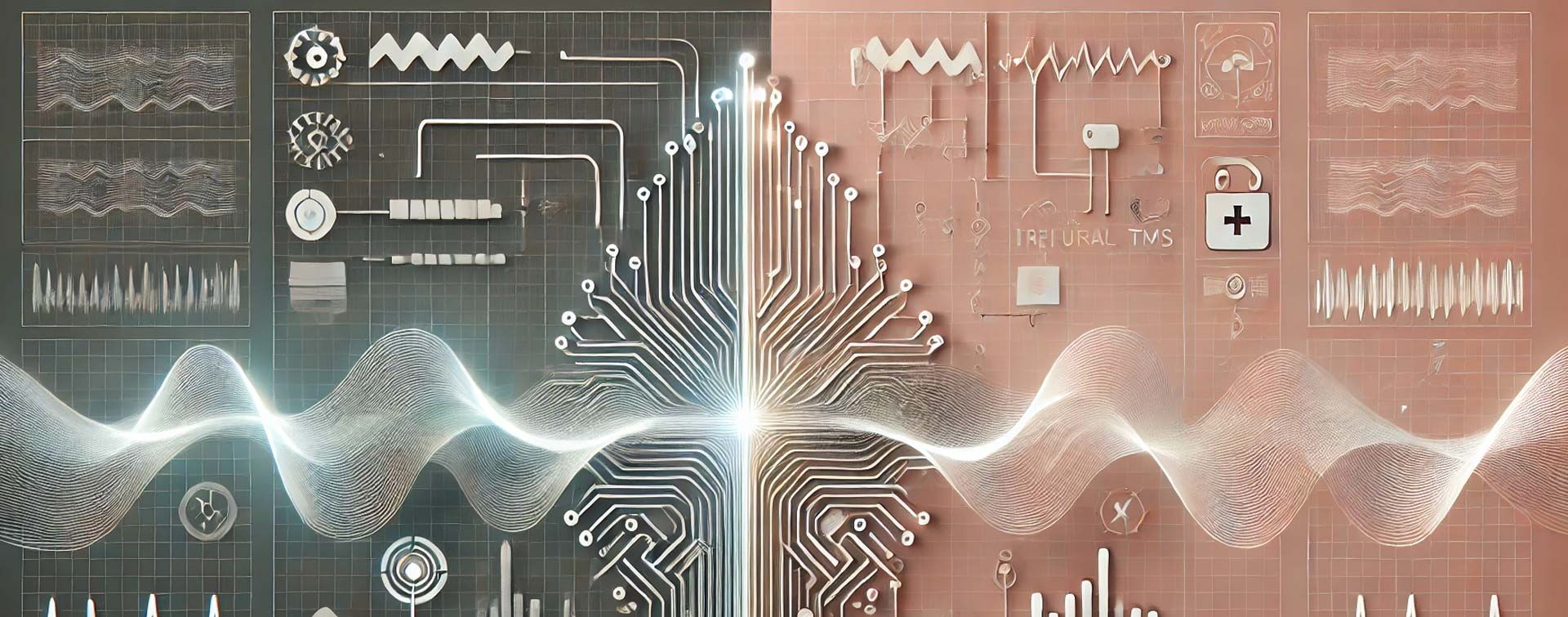Blog
Comparing The SAINT Protocol with Traditional TMS: What Makes It Different?
- August 8, 2024
-
NeuroMod Health

Transcranial Magnetic Stimulation (TMS) has long been used as a treatment for depression, particularly for patients who do not respond to traditional therapies like antidepressants and psychotherapy. However, not all TMS protocols are the same. The SAINT Protocol (Stanford Accelerated Intelligent Neuromodulation Therapy) has emerged as a significant advancement over traditional TMS, offering unique advantages in terms of treatment intensity, duration, and effectiveness. In this article, we explore the key differences between the SAINT Protocol and traditional TMS, illustrating why SAINT is generating significant interest in the mental health community.
Recent Posts

Does TMS Hurt? Common Myths About the Procedure
Traditional TMS: An Overview
Traditional TMS involves the use of magnetic fields to stimulate specific areas of the brain, typically the left dorsolateral prefrontal cortex, which is associated with mood regulation. This non-invasive treatment is administered through a coil placed on the scalp, which generates magnetic pulses to stimulate neural activity. The typical course of traditional TMS involves daily sessions over several weeks, with each session lasting 20 to 40 minutes. While traditional TMS has proven effective for many patients, its success rate varies, and the lengthy treatment schedule can be burdensome.
The SAINT Protocol: A New Approach
The SAINT Protocol, developed at Stanford University, represents a more advanced approach to TMS, focusing on accelerated treatment and personalized targeting. The key differences between SAINT and traditional TMS lie in treatment intensity, duration, and the underlying methodology.
1. Treatment Intensity
Traditional TMS generally involves a consistent but moderate intensity of magnetic pulses. The SAINT Protocol, on the other hand, significantly increases the intensity by administering multiple sessions within a single day. This approach is designed to rapidly stimulate the brain, leading to quicker and more pronounced effects on mood regulation. The higher intensity and frequency of sessions in the SAINT Protocol are carefully calibrated to ensure safety and maximize efficacy.
2. Duration of Treatment
While traditional TMS requires daily sessions over a period of four to six weeks, the SAINT Protocol condenses treatment into a much shorter timeframe. Typically, the entire treatment course can be completed within a week, with up to 10 sessions per day. This accelerated schedule offers a considerable advantage for patients who need rapid relief from depressive symptoms or have difficulty committing to extended treatment periods.
3. Effectiveness and Personalization
One of the most significant differentiators between the SAINT Protocol and traditional TMS is the focus on personalized treatment. The SAINT Protocol uses advanced brain imaging techniques, such as MRI, to identify the optimal treatment site for each patient. This level of personalization ensures that the magnetic pulses are delivered to the most effective location, potentially increasing the treatment’s success rate.
Clinical trials have shown that the SAINT Protocol achieves higher success rates in reducing depressive symptoms compared to traditional TMS. In some studies, nearly 80% of participants experienced significant symptom relief, with many achieving remission. This level of effectiveness is notably higher than traditional TMS, where the success rate varies and is generally lower.
Why The SAINT Protocol Could Be More Suitable for Certain Patients
The accelerated nature of the SAINT Protocol, combined with its high success rate, makes it an attractive option for patients with treatment-resistant depression or those who need rapid symptom relief. The shorter treatment duration can also be more convenient for individuals with busy schedules or those living far from treatment centers. Furthermore, the personalized approach of the SAINT Protocol offers hope for patients who have not responded to traditional TMS or other treatments.
Conclusion
The accelerated nature of the SAINT Protocol, combined with its high success rate, makes it an attractive option for patients with treatment-resistant depression or those who need rapid symptom relief. The shorter treatment duration can also be more convenient for individuals with busy schedules or those living far from treatment centers. Furthermore, the personalized approach of the SAINT Protocol offers hope for patients who have not responded to traditional TMS or other treatments.


